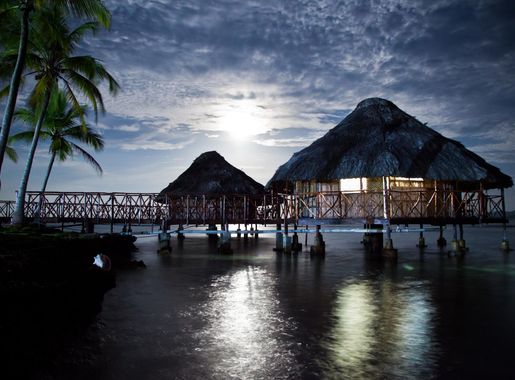
Enchanting Paradise: The San Blas Islands
Discover the untouched beauty of the San Blas Islands in Panama, where crystal-clear waters, pristine beaches, and rich Guna culture await you in this tropical paradise.
The San Blas Islands, an archipelago of 365 islands and cays, is a slice of paradise located off the Caribbean coast of Panama. Managed by the indigenous Guna Yala people, the islands offer an unspoiled natural beauty that is rare to find. The turquoise waters, white sandy beaches, and vibrant coral reefs make it a haven for nature lovers and those seeking a tranquil escape. The islands are a world away from the bustle of city life. Here, you can find rustic cabins and huts, often with nothing more than a hammock to sway in the sea breeze. The Guna people have preserved their culture and traditions, providing a unique cultural experience for visitors. You can learn about their way of life, participate in traditional dances, and purchase handcrafted molas (fabric art). Snorkeling and diving are popular activities here, with the coral reefs teeming with marine life. For the more adventurous, island-hopping tours offer the chance to explore the diverse landscapes and secluded beaches. Whether you're relaxing on the shore or exploring underwater, the San Blas Islands promise an unforgettable experience.
Local tips in San Blas Islands
- Bring cash, as there are no ATMs on the islands and credit cards are rarely accepted.
- Pack light and include essentials like sunscreen, mosquito repellent, and a reusable water bottle.
- Respect the local customs and traditions of the Guna Yala people.
- Book your stay and tours in advance, as accommodations are limited and can fill up quickly.
- Expect basic amenities, as most accommodations are eco-friendly and rustic.
- Learn a few basic phrases in Spanish; it can be helpful in communicating with locals.
- Be prepared for limited connectivity; embrace the digital detox and enjoy the natural surroundings.
Enchanting Paradise: The San Blas Islands
The San Blas Islands, an archipelago of 365 islands and cays, is a slice of paradise located off the Caribbean coast of Panama. Managed by the indigenous Guna Yala people, the islands offer an unspoiled natural beauty that is rare to find. The turquoise waters, white sandy beaches, and vibrant coral reefs make it a haven for nature lovers and those seeking a tranquil escape. The islands are a world away from the bustle of city life. Here, you can find rustic cabins and huts, often with nothing more than a hammock to sway in the sea breeze. The Guna people have preserved their culture and traditions, providing a unique cultural experience for visitors. You can learn about their way of life, participate in traditional dances, and purchase handcrafted molas (fabric art). Snorkeling and diving are popular activities here, with the coral reefs teeming with marine life. For the more adventurous, island-hopping tours offer the chance to explore the diverse landscapes and secluded beaches. Whether you're relaxing on the shore or exploring underwater, the San Blas Islands promise an unforgettable experience.
When is the best time to go to San Blas Islands?
Iconic landmarks you can’t miss
Panamá Viejo
Discover the historic ruins of Panamá Viejo, a UNESCO World Heritage Site that tells the story of Panama's rich cultural heritage and colonial past.
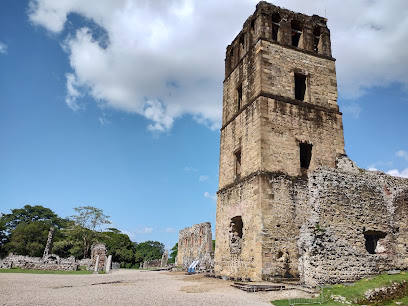
Metropolitan Natural Park
Explore the lush landscapes of Metropolitan Natural Park, a serene escape in Panama City, rich in wildlife and breathtaking views.
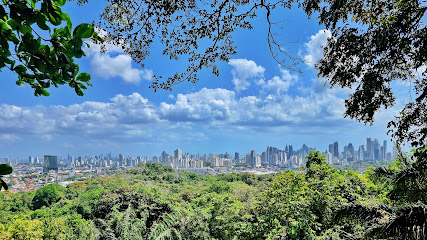
Fort San Lorenzo
Discover the historical allure of Fort San Lorenzo, a colonial fortress offering breathtaking views and a deep dive into Panama's rich maritime past.

Sea San Blas | San Blas Tours
Explore the stunning San Blas Islands with Sea San Blas, offering curated tours of breathtaking beaches and vibrant cultural experiences in Panama.
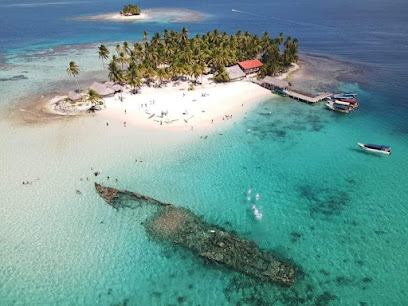
San Blas Dreams • San Blas & Panama Tours
Explore the breathtaking San Blas Islands with San Blas Dreams, your premier tour agency for unforgettable adventures in Panama.
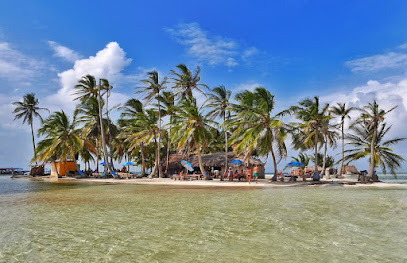
Mola Museum
Explore the vibrant world of Mola art and immerse yourself in the rich culture of the Guna Yala people at the Mola Museum in Panama City.
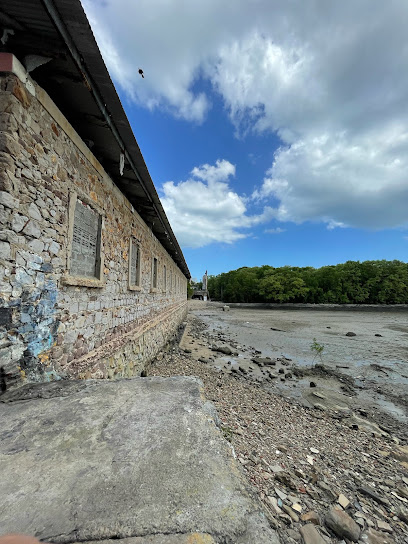
San Blas Adventures
Explore the enchanting San Blas Islands with San Blas Adventures – personalized boat tours for an unforgettable Caribbean experience.
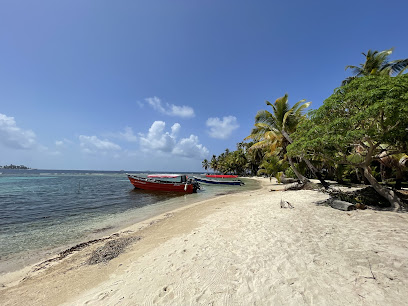
Puerto de Carti
Explore the enchanting Puerto de Carti, your gateway to the stunning San Blas Islands and vibrant Guna Yala culture in Panama.
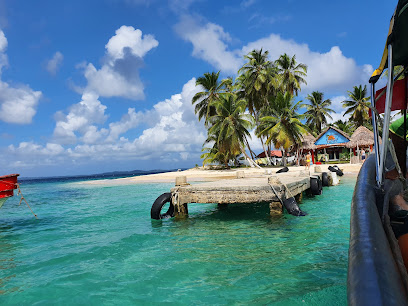
Cabañas wailidup
Experience the breathtaking beauty of Guna Yala at Cabañas Wailidup, a serene resort hotel blending relaxation with rich local culture.
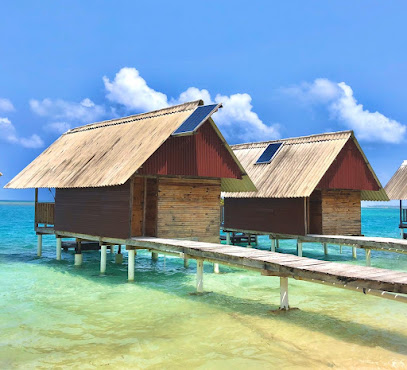
Guna Yala Islands
Explore the breathtaking Guna Yala Islands in Panama, a paradise of pristine beaches, vibrant culture, and unforgettable adventures in nature.
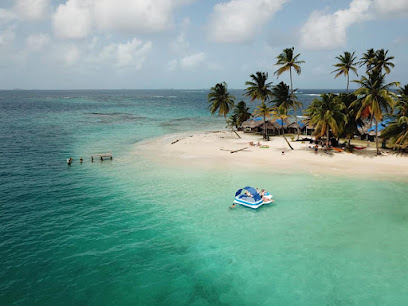
Chichime Isla San Blas
Discover the enchanting beauty of Chichime Isla San Blas, a serene paradise in Panama's Guna Yala Comarca, rich in culture and adventure.
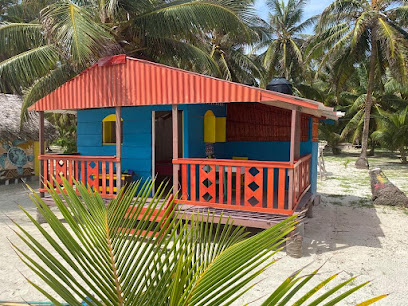
Panama San Blas Tours Int
Discover the breathtaking beauty of the San Blas Islands with expert-guided tours that immerse you in local culture and stunning natural landscapes.
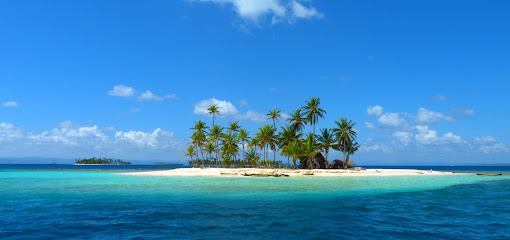
Isla Franklin- Cabaña Tubasenika
Discover the serene beauty of Isla Franklin at Cabaña Tubasenika, your perfect cottage retreat in Panama's tropical paradise.

Viajes y tour San Blas
Discover the pristine beauty and rich culture of the San Blas Islands with Viajes y Tour San Blas, your expert sightseeing tour agency in Panama.
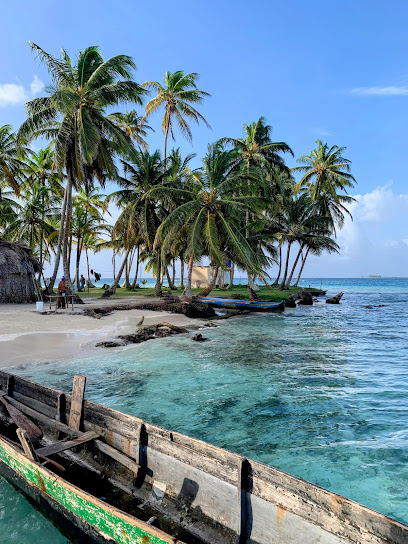
Viajes San Blas Panamà
Explore the breathtaking beauty and rich culture of San Blas Islands with Viajes San Blas Panama - your ultimate travel experience in paradise.
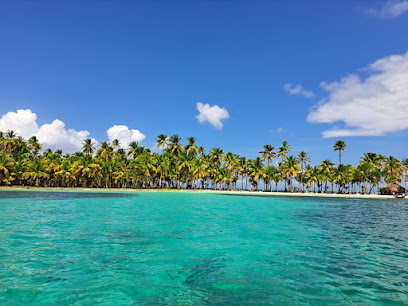
Unmissable attractions to see
Biomuseo
Explore Panama's rich biodiversity at Biomuseo, an architectural marvel showcasing the country's unique ecosystems and commitment to conservation.
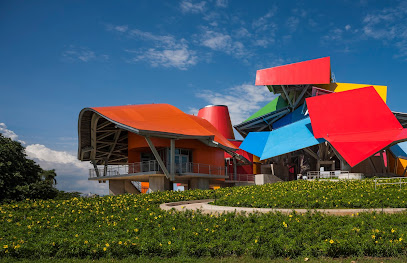
Parque Nacional Chagres
Experience the breathtaking beauty and rich biodiversity of Parque Nacional Chagres, a national park that captures the essence of Panama's natural heritage.

Cocolí Locks (Panama Canal Expansion)
Discover the incredible Cocolí Locks, a key feature of the Panama Canal Expansion, showcasing the intersection of engineering and nature.
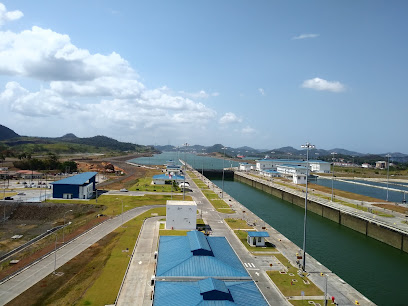
Cuevas de Bayano
Explore the breathtaking Cuevas de Bayano, a natural wonder in Panamá Province, filled with stunning formations and rich biodiversity.
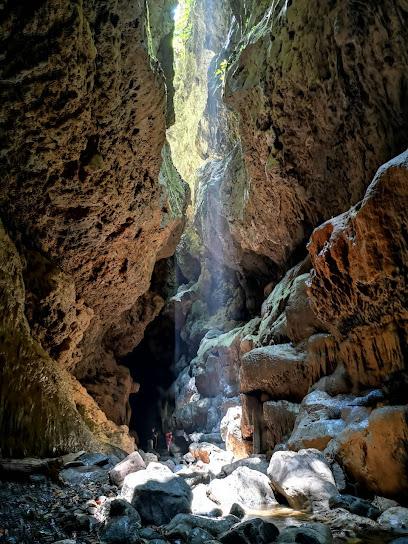
Catamaran Adventures San Blas
Discover the breathtaking beauty and adventure of Catamaran Adventures San Blas in the stunning Cayos Holandeses, Panama.
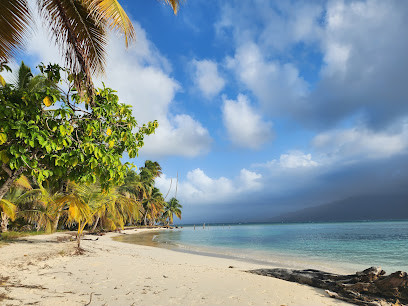
San Blas Trips Pty
Explore the stunning San Blas Islands with San Blas Trips Pty, where adventure meets cultural richness in a tropical paradise.
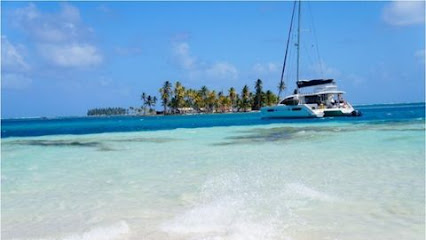
Cayos Chichime
Discover the breathtaking beauty of Cayos Chichime in Guna Yala, a tropical paradise with pristine beaches and vibrant marine life.
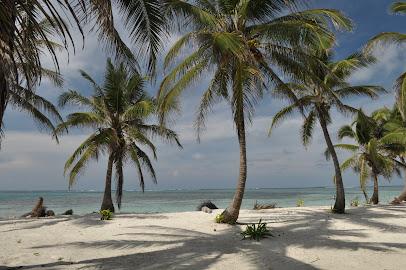
Essential places to dine
CasaCasco
Discover the vibrant fusion of grill dining, cocktail culture, and nightlife at CasaCasco in Panama City - where every level offers something unique.
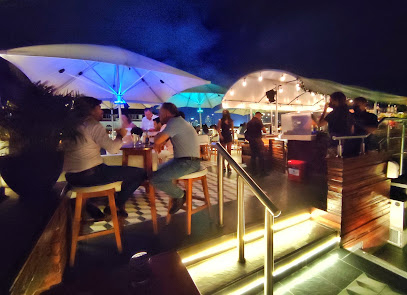
Fonda Lo Que Hay
Discover the unique flavors of Panama at Fonda Lo Que Hay – where tradition meets innovation in every dish.
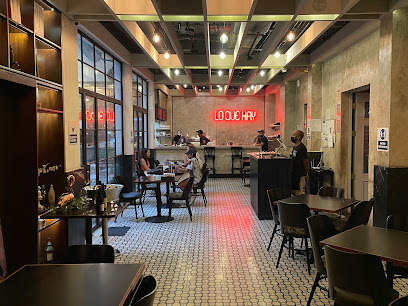
Lazotea Restaurant & Rooftop
Discover breathtaking views and exquisite cuisine at Lazotea Restaurant & Rooftop in Panama City - where every meal becomes an experience.
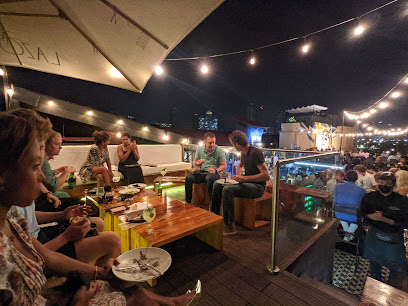
Restaurante Santa Rita
Discover the flavors of Argentina at Restaurante Santa Rita in Panama City – where premium steaks meet vibrant tapas in a warm ambiance.
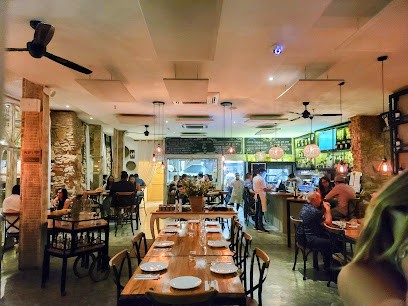
Maito Restaurante
Experience the essence of Panamanian cuisine at Maito Restaurante - where tradition meets innovation in every bite.

Isla Diablo (Niadup)
Explore Isla Diablo (Niadup) – A Tropical Paradise with Stunning Beaches and Vibrant Marine Life in Panama.
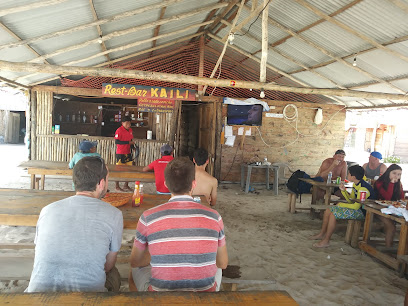
Cabañas wailidup
Discover tranquility and cultural richness at Cabañas Wailidup in Guna Yala Comarca – your gateway to paradise.
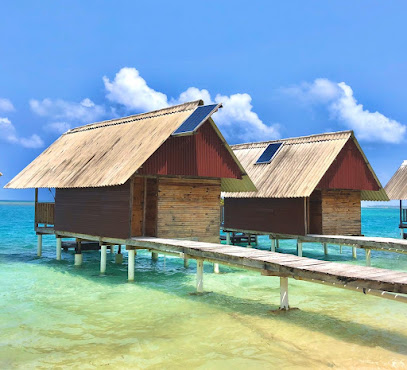
Chichime Isla San Blas
Discover Chichime Island: A Tropical Paradise with Pristine Beaches and Cozy Log Cabins in Guna Yala.
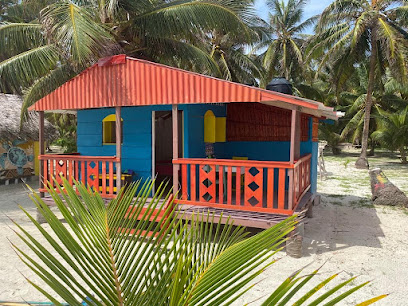
Banedo Fragata
Discover exquisite local flavors at Banedo Fragata - your culinary haven in El Porvenir.
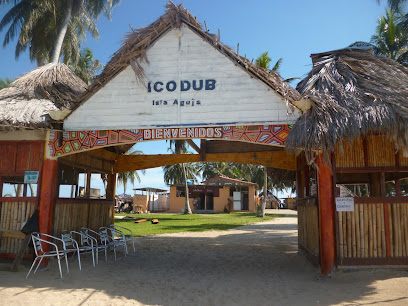
El Paraiso
Experience authentic Panamanian cuisine at El Paraiso in La Mesa – where delicious food meets warm hospitality in an inviting atmosphere.
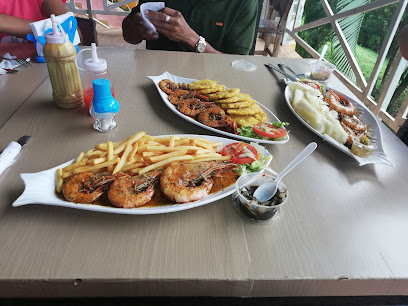
ZABAH Kitchen and Lounge
Discover the essence of Panamanian cuisine at ZABAH Kitchen and Lounge - where every dish tells a story.
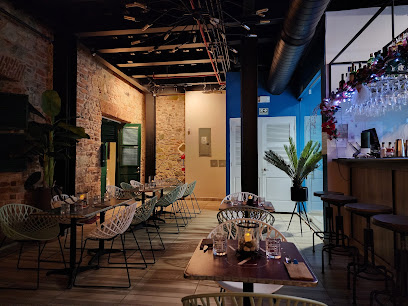
Ibin’s beach restaurant
Discover Ibin's Beach Restaurant on Isla Banedup for an authentic taste of Guna Yala's culinary delights amidst stunning Caribbean views.
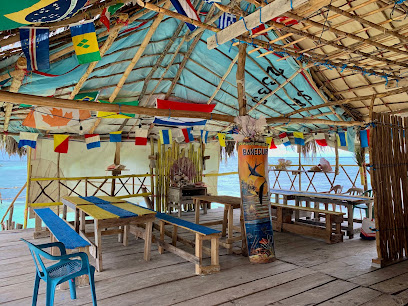
Isla pelícano
Isla Pelícano: A serene Panamanian island retreat with stunning beaches and delightful local cuisine.

Cabañas Narasgandup (Naranjo Chico)
Experience serene island living at Cabañas Narasgandup - your gateway to nature’s wonders in Guna Yala.
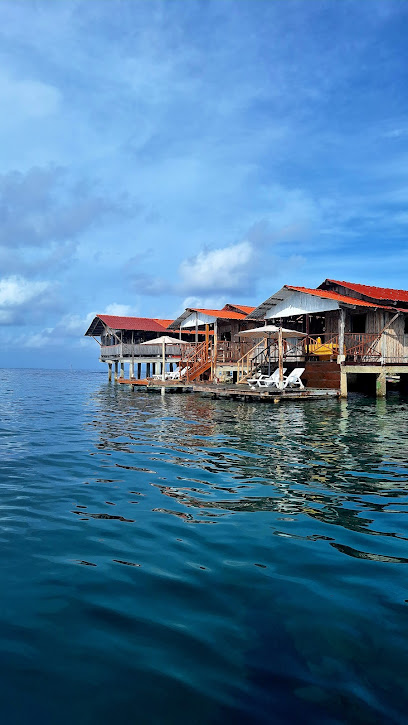
Communities on boat, San Blas sailing, snorkel, healthy food with us.
Explore the pristine waters of San Blas Islands with Communities on Boat - sailing, snorkeling, and savoring healthy local cuisine await!

Markets, malls and hidden boutiques
Estación Texaco Llano Cartí, FoodMart
Discover convenience and comfort at Estación Texaco Llano Cartí, the perfect stop for snacks and essentials on your journey through Panamá.
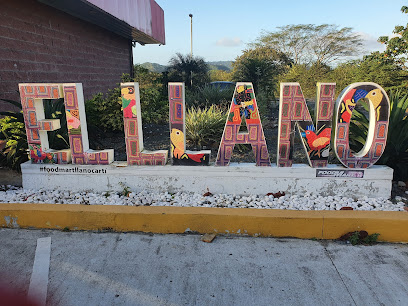
Chichime Isla San Blas
Chichime Isla San Blas: A tranquil paradise of log cabins and stunning beaches in Guna Yala Comarca, ideal for relaxation and cultural exploration.
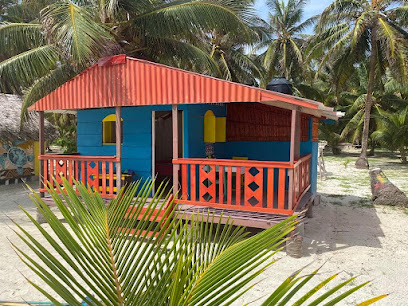
San Blas Islands Panamá
Explore the stunning San Blas Islands, a tropical paradise with pristine beaches, rich culture, and extraordinary natural beauty in Panamá.

Catamaran Adventures San Blas
Discover the beauty of the San Blas Islands with Catamaran Adventures, where pristine waters meet vibrant culture and unforgettable experiences await.
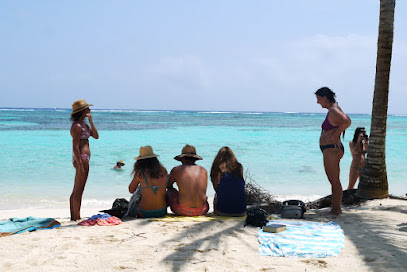
I Travel by Boat
Experience the breathtaking beauty of Chichime Island with I Travel by Boat, where adventure meets tranquility in a tropical paradise.
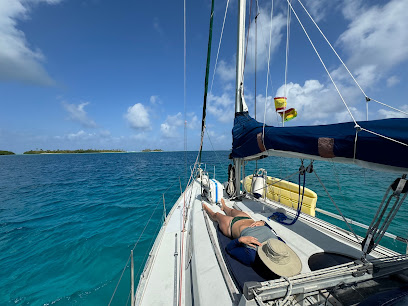
Coco Blanco Islands
Explore the serene beauty of Coco Blanco Islands in Panama, where pristine beaches and vibrant marine life await every traveler.

Puerto Dibin, Carti Tupile, Kuna Yala.
Explore the vibrant local culture and unique offerings at Puerto Dibin, your essential stop in Kuna Yala for adventures and authentic Kuna crafts.
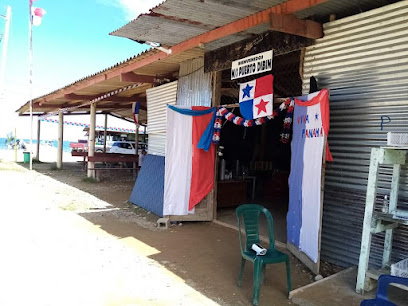
Mini Super Bar Smith
Discover local flavors and farm-fresh produce at Mini Super Bar Smith in Comunidad Nalunega, a unique supermarket experience in Panama.
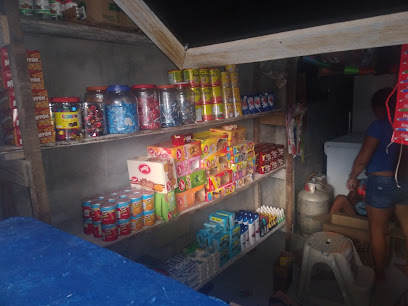
Tienda Gadiel
Experience authentic Panamanian agriculture at Tienda Gadiel, a charming farm shop in Río Azúcar offering fresh produce and local artisanal products.
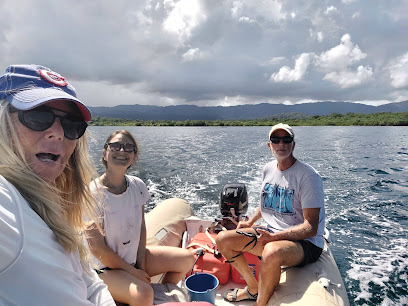
Tienda Adames
Discover authentic Panamanian culture at Tienda Adames in El Porvenir, where local craftsmanship meets warm hospitality.
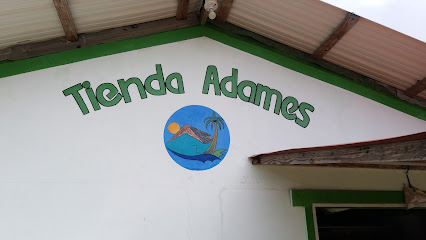
folkloriks Panamá by Ana Montero
Explore unique women's fashion at Folkloriks Panamá, a charming boutique in Chepo, blending local craftsmanship with contemporary trends.
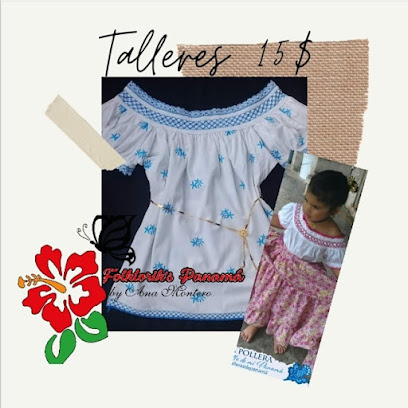
Rosalia Store
Explore the vibrant selection of local products at Rosalia Store, your go-to grocery haven in Nargana for authentic flavors and everyday essentials.
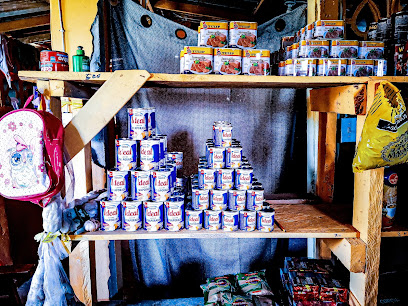
El Baúl De Yemayá Y Oshún
Discover the vibrant culture of Panama at El Baúl De Yemayá Y Oshún, a unique home goods store in Chepo filled with artisan treasures.
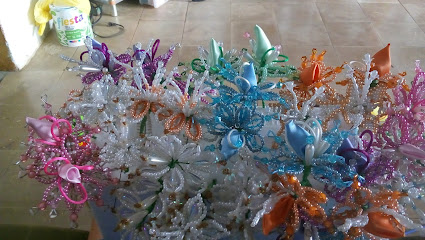
Tienda de Roberto
Experience the heart of Ticantiquí at Tienda de Roberto, a local grocery store brimming with authentic Panamanian flavors and friendly faces.

Jc Print Shop
Explore Jc Print Shop in Chepo for unique clothing and personalized prints, capturing the essence of Panama's vibrant culture.

Essential bars & hidden hideouts
CasaCasco
Experience the best of Panama's culinary and nightlife scene at CasaCasco, a grill and cocktail bar that offers exceptional flavors and vibrant entertainment.
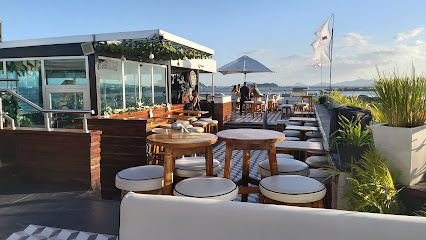
The Wallace
Experience the heart of Scottish and English cuisine at The Wallace, a cozy pub in the vibrant Panama City.
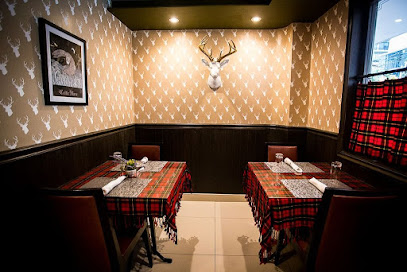
Chupitos 507
Discover the vibrant nightlife at Chupitos 507, a must-visit bar in Panama City known for its creative cocktails and lively atmosphere.

Sama Sky Lounge
Experience breathtaking sunsets and exquisite cocktails at Sama Sky Lounge, the ultimate rooftop destination in Panama City.

Guna Yala Islands
Explore the Guna Yala Islands: A stunning paradise of crystal-clear waters, rich culture, and vibrant biodiversity awaits you in Panama.
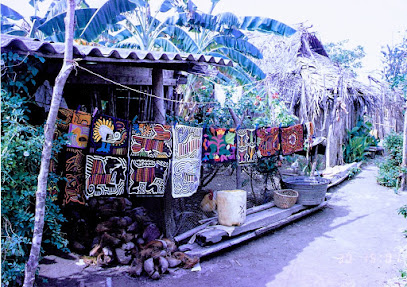
The Panama Barcrawl
Discover Panama City's nightlife like never before with The Panama Barcrawl - an unforgettable journey through the best bars and clubs.
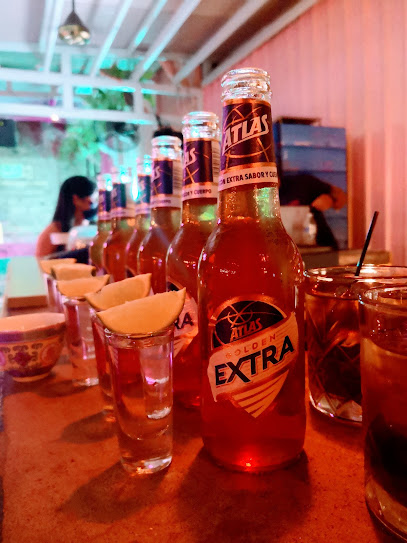
Pipas & Cocadas - Av. Manuel Espinosa Batista
Explore a delightful culinary experience at Pipas & Cocadas, where gourmet cuisine meets a welcoming atmosphere for food lovers and furry friends alike.
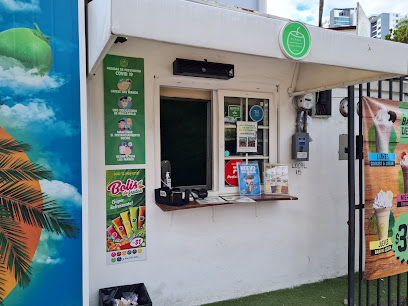
La Parrilla de la Estancia • Megamall
Explore the authentic Panamanian culinary experience at La Parrilla de la Estancia, known for its exquisite grilled specialties and inviting atmosphere.
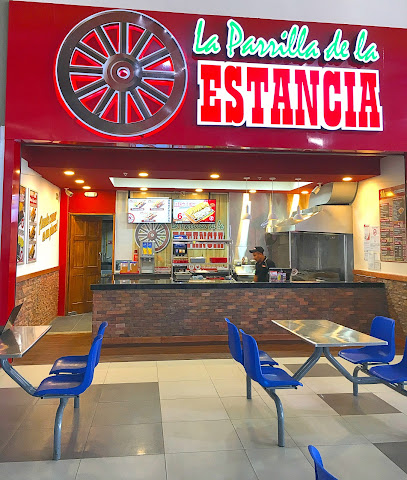
ZABAH Kitchen and Lounge
Experience the vibrant flavors of Panama City at ZABAH Kitchen and Lounge, where culinary art meets a lively atmosphere.
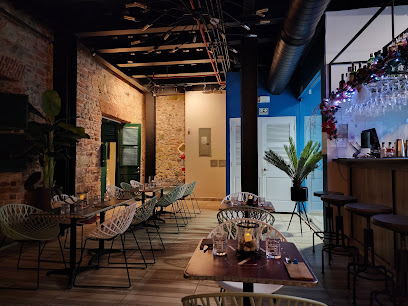
Isla pelícano
Experience the beauty and tranquility of Isla Pelícano, a hidden paradise in Panama with exquisite dining and serene accommodations.
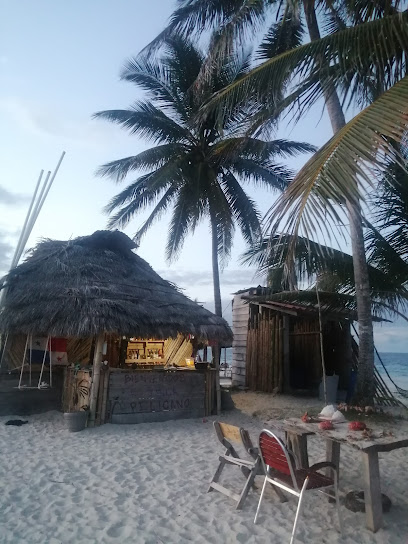
Jardin La Macaraqueña
Experience the vibrant nightlife of Panama City at Jardin La Macaraqueña, a tropical bar offering local drinks in a stunning garden setting.
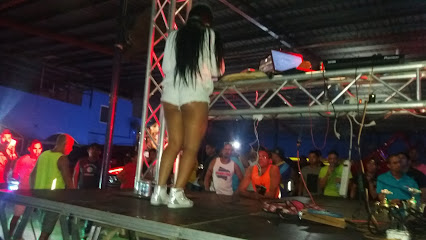
PUB 23
Discover the vibrant nightlife of Panama City at PUB 23, where great drinks and a lively atmosphere await every visitor.
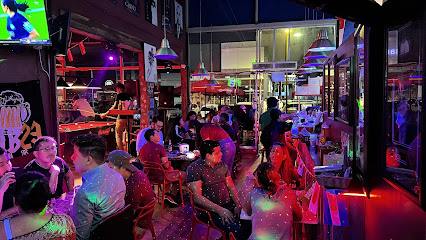
San Blas sailing experience
Experience the breathtaking beauty and rich culture of the San Blas Islands while sailing the stunning Caribbean waters of Guna Yala.
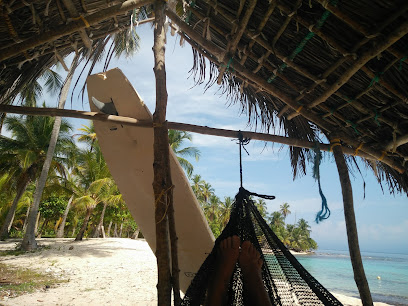
San Blas Islands Panamá
Experience the paradise of San Blas Islands, Panamá, where pristine beaches and vibrant culture create unforgettable memories.
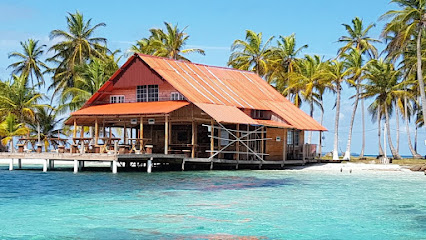
Catamaran Adventures San Blas
Sail through the stunning San Blas Islands with Catamaran Adventures, a premier tour agency for unforgettable tropical experiences.
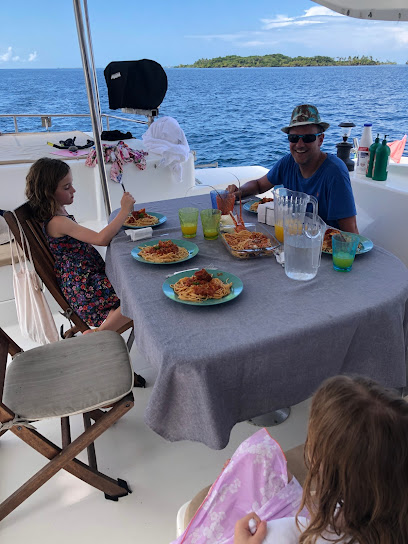
Local Phrases
-
- HelloNuedi
[Nweh-dee] - GoodbyeNe gwee
[Neh gwee] - YesEe
[Ih] - NoNoo
[Noo] - Please/You're welcomePor favor
[Pohr fah-vohr] - Thank youGracias
[Grah-see-ahs] - Excuse me/SorryDisculpa
[Dees-kool-pah] - How are you?Kwe ta bai?
[Kweh tah bah-ee?] - Fine. And you?Bon. I bu?
[Bohn. Ee boo?] - Do you speak English?Bo ta papia Ingles?
[Boh tah pah-pee-ah Een-glehs?] - I don't understandMi no ta kumpronde
[Mee noh tah koom-prohn-deh]
- HelloNuedi
-
- I'd like to see the menu, pleaseMi kier mira e menu, por favor
[Mee kee-ehr mee-rah eh meh-noo, pohr fah-vohr] - I don't eat meatMi no kome karni
[Mee noh koh-meh kahr-nee] - Cheers!Salud!
[Sah-lood] - I would like to pay, pleaseMi kier paga, por favor
[Mee kee-ehr pah-gah, pohr fah-vohr]
- I'd like to see the menu, pleaseMi kier mira e menu, por favor
-
- Help!Ayuda!
[Ah-yoo-dah] - Go away!Bai for
[Bah-ee fohr] - Call the Police!Yama polis!
[Yah-mah poh-lees] - Call a doctor!Yama un dokter!
[Yah-mah oon dohk-tehr] - I'm lostMi ta perdí
[Mee tah pehr-dee] - I'm illMi ta malu
[Mee tah mah-loo]
- Help!Ayuda!
-
- I'd like to buy...Mi kier kumpra...
[Mee kee-ehr koom-prah...] - I'm just lookingMi ta mira solamente
[Mee tah mee-rah soh-lah-mehn-teh] - How much is it?Kuantu e kuesta?
[Kwan-too eh kwehs-tah?] - That's too expensiveEs masha karu
[Ehs mah-shah kah-roo] - Can you lower the price?Bo por baha e preis?
[Boh pohr bah-hah eh preh-ees?]
- I'd like to buy...Mi kier kumpra...
-
- What time is it?Kuantu ora e ta?
[Kwan-too oh-rah eh tah?] - It's one o'clockE ta un ordu
[Eh tah oon ohr-doo] - Half past (10)Mita (10)
[Mee-tah (dees)] - MorningMadruga
[Mah-droo-gah] - AfternoonTardi
[Tahr-dee] - EveningAnochi
[Ah-noh-chee] - YesterdayAnoche
[Ah-noh-cheh] - TodayAwe
[Ah-weh] - TomorrowMañana
[Mah-nyah-nah] - 1Uno
[Oo-noh] - 2Dos
[Dohs] - 3Tres
[Trehss] - 4Cuatro
[Kwah-troh] - 5Cinco
[Seen-koh] - 6Seis
[Seh-ees] - 7Siete
[Syeh-teh] - 8Ocho
[Oh-choh] - 9Nueve
[Nweh-veh] - 10Diez
[Dyehs]
- What time is it?Kuantu ora e ta?
-
- Where's a/the...?Undi ta un/ e...?
[Oon-dee tah oon/eh...?] - What's the address?Kiko e adres ta?
[Kee-koh eh ah-drehs tah?] - Can you show me (on the map)?Bo por mustra mi (riba e mapa)?
[Boh pohr moos-trah mee (ree-bah eh mah-pah)?] - When's the next (bus)?Kuando e siguiente (bus)?
[Kwan-doh eh see-gwee-ehn-teh (boos)?] - A ticket (to ....)Un tiki (pa ....)
[Oon tee-kee (pah ....)]
- Where's a/the...?Undi ta un/ e...?
History of San Blas Islands
-
Long before the arrival of Europeans, the San Blas Islands were inhabited by the indigenous Guna Yala people. They lived in harmony with nature, relying on fishing, agriculture, and trade. Their social structure and spiritual beliefs were deeply connected to the land and sea, which played crucial roles in their daily lives and cultural rituals.
-
The Spanish arrived in the 16th century, driven by the quest for gold and new territories. The Guna Yala fiercely resisted Spanish attempts to colonize their lands. Despite these efforts, the Spanish often exploited the islands' strategic location for maritime routes between the Americas and Europe.
-
One of the most significant events in the history of the San Blas Islands is the Guna Revolution of 1925. The Guna people, led by Nele Kantule, revolted against Panamanian authorities who attempted to suppress their cultural practices and autonomy. The revolution resulted in the recognition of the Guna's rights to self-governance and the establishment of the Guna Yala comarca (autonomous territory).
-
Following the Guna Revolution, the Panamanian government officially recognized the Guna Yala comarca in 1938. This legal framework granted the Guna people a significant degree of autonomy, allowing them to preserve their cultural heritage, language, and traditions. The comarca system is a unique arrangement that highlights the resilience and determination of the Guna people to maintain their way of life.
-
In recent decades, the San Blas Islands have become a popular destination for eco-tourism. The Guna people have embraced this opportunity by developing community-based tourism initiatives that allow visitors to experience their unique culture and pristine natural environment. Despite the challenges posed by modernization and climate change, the Guna continue to protect their islands and cultural identity while sharing their heritage with the world.
San Blas Islands Essentials
-
The San Blas Islands, also known as Guna Yala, are located off the Caribbean coast of Panama. The most common way to get there is by flying into Tocumen International Airport (PTY) in Panama City. From Panama City, you can take a 4x4 vehicle to the port of Carti, which takes about 2.5 to 3 hours. From Carti, a boat ride of approximately 30 to 60 minutes will take you to the islands. Some travelers also choose to fly from Panama City to the small airstrip in El Porvenir, the capital of Guna Yala, and then take a boat to their final destination.
-
Once on the San Blas Islands, transportation is primarily by boat. Many of the islands are small and can be easily explored on foot. Water taxis are available to transport you between islands. It is advisable to arrange transportation in advance, either through your accommodation or a local tour operator. There are no cars on the islands, and infrastructure is minimal, so be prepared for a more rustic mode of travel.
-
The official currency of Panama is the Panamanian Balboa (PAB), which is pegged to the US Dollar (USD) at a 1:1 ratio. US Dollars are widely accepted and often used interchangeably with Balboas. It is important to carry cash, as there are no ATMs on the San Blas Islands. Credit cards are generally not accepted, so ensure you have enough cash to cover your expenses, including accommodation, meals, and transportation.
-
The San Blas Islands are generally safe for tourists, but it is always wise to take standard precautions. Petty theft can occur, so keep your belongings secure and avoid leaving valuables unattended. There are no specific high-crime areas targeting tourists, but it is always best to stay vigilant and aware of your surroundings. The local Guna people are known for their hospitality and usually ensure a safe environment for visitors.
-
In case of emergency, it is recommended to have travel insurance that covers medical emergencies. There are basic medical facilities on some of the larger islands, but for serious medical issues, you may need to be evacuated to a hospital in Panama City. It is advisable to carry a first aid kit and any necessary medications. For minor health issues, some islands have small clinics or pharmacies where you can purchase basic supplies.
-
Fashion: Do dress modestly, especially when visiting Guna villages. Avoid wearing revealing clothing. Religion: Do respect local customs and traditions. Always ask for permission before taking photographs of local people. Public Transport: Do be respectful when using water taxis and follow the guidance of the boat operators. Greetings: Do greet locals with a friendly 'hola' and a smile. Eating & Drinking: Do try local seafood and traditional Guna dishes. Don’t waste food, as it is considered disrespectful. Always drink bottled or purified water, as tap water may not be safe.
-
To experience the San Blas Islands like a local, consider staying in a traditional Guna lodge or homestay. Engage with the Guna people, as they are often willing to share their culture and traditions. Visit the local markets to purchase handmade molas, which are vibrant textile art pieces created by Guna women. Participate in a traditional dance or music event if you have the opportunity. Respect the natural environment by not littering and following any guidelines provided by your hosts.
Trending Landmark in San Blas Islands
-
Panamá Viejo
-
Metropolitan Natural Park
-
Fort San Lorenzo
-
Sea San Blas | San Blas Tours
-
San Blas Dreams • San Blas & Panama Tours
-
Mola Museum
-
San Blas Adventures
-
Puerto de Carti
-
Cabañas wailidup
-
Guna Yala Islands
-
Chichime Isla San Blas
-
Panama San Blas Tours Int
-
Isla Franklin- Cabaña Tubasenika
-
Viajes y tour San Blas
-
Viajes San Blas Panamà
Nearby Cities to San Blas Islands
-
Things To Do in Portobelo
-
Things To Do in Panama City
-
Things To Do in Colon
-
Things To Do in Chitre
-
Things To Do in Las Tablas
-
Things To Do in Bocas del Toro
-
Things To Do in Boquete
-
Things To Do in Sincelejo
-
Things To Do in Cartagena
-
Things To Do in David
-
Things To Do in Volcan
-
Things To Do in Puerto Viejo
-
Things To Do in Barranquilla
-
Things To Do in Medellín
-
Things To Do in Santa Marta

